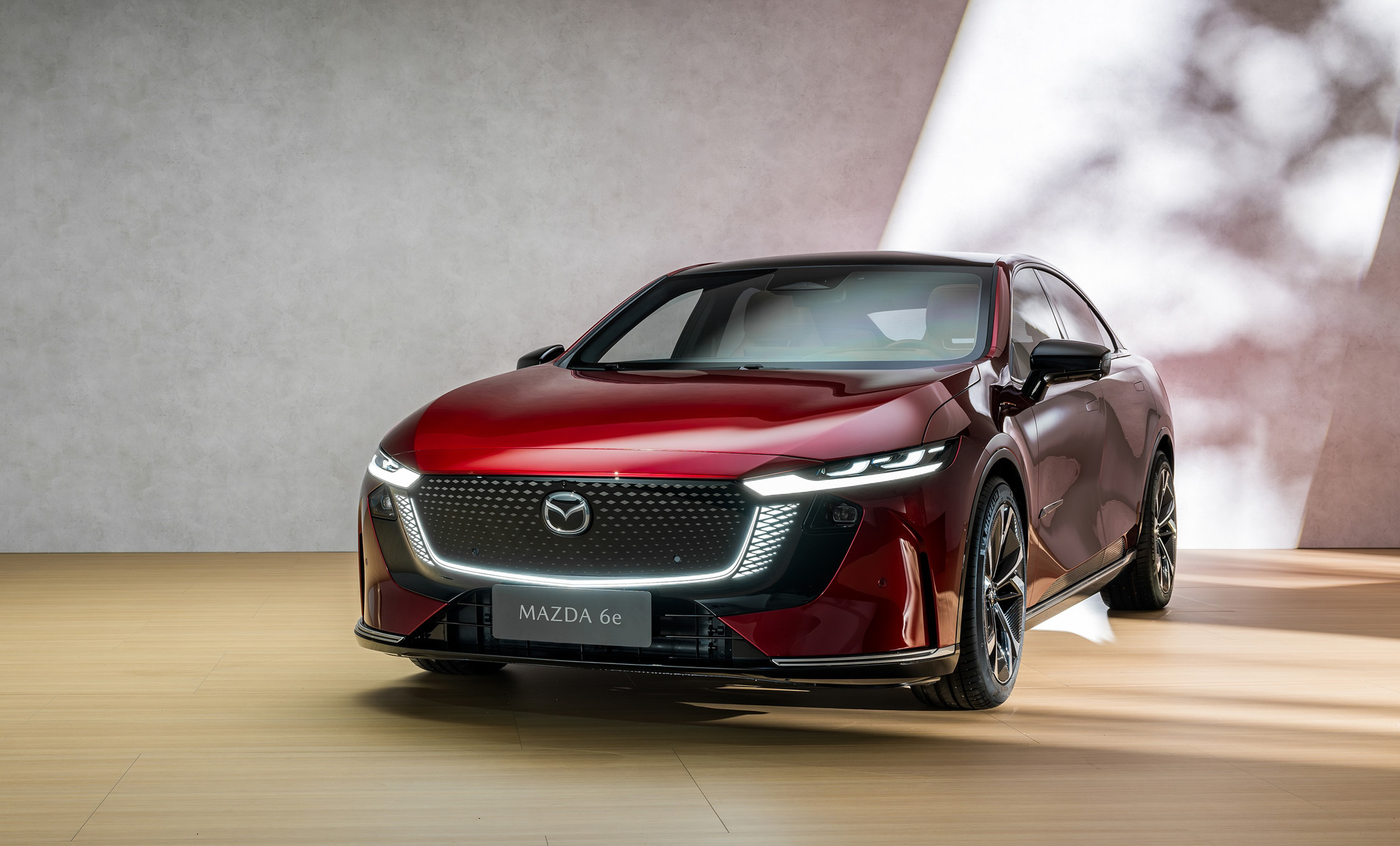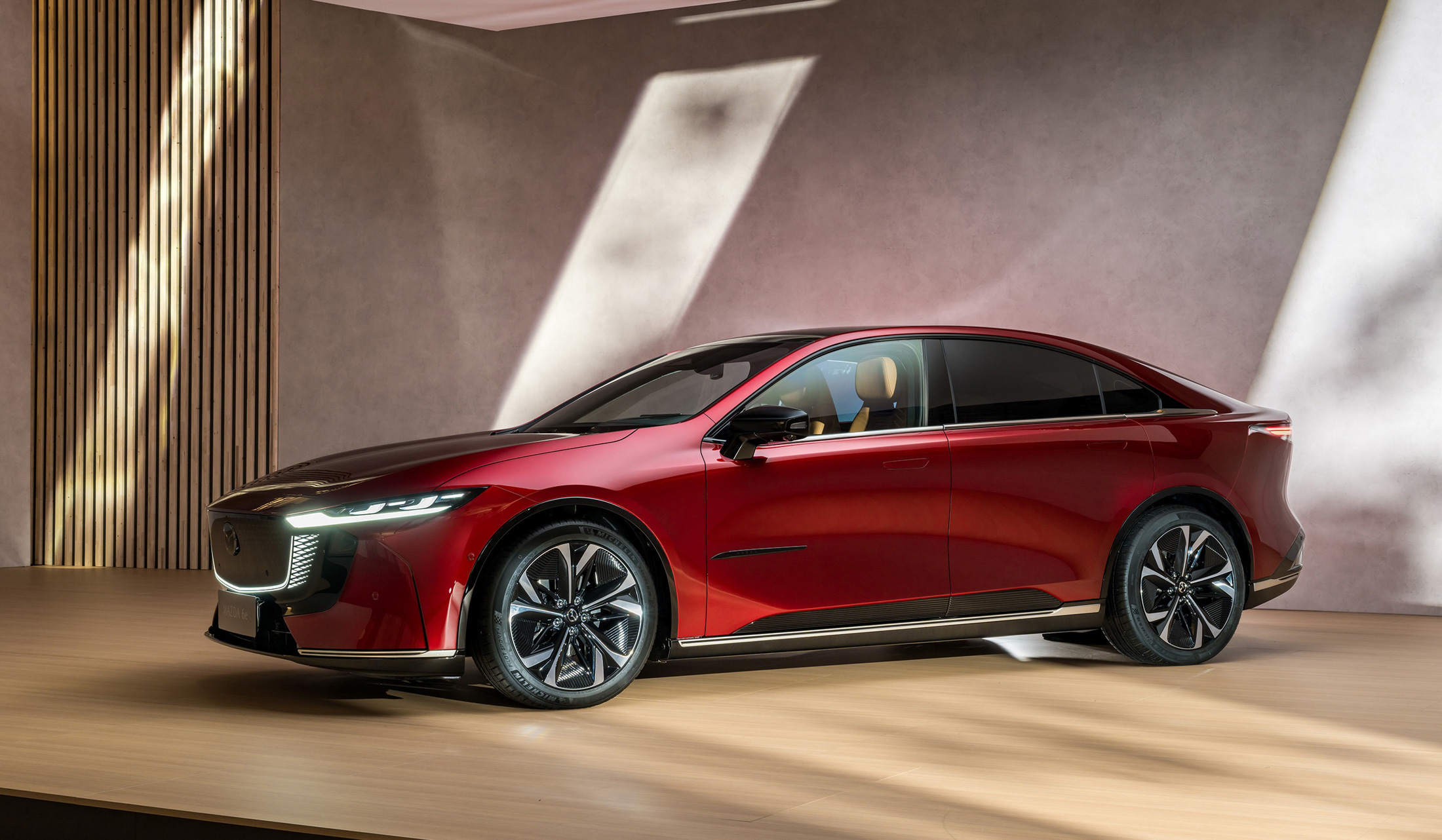- Mazda is developing a new fully electric SUV, expected to debut before the end of this year.
- A recent trademark filing hints that the compact SUV will adopt the CX-6e moniker.
- It will likely be based on Changan’s underpinnings, but another dedicated EV is coming in 2027.
Mazda has been doing surprisingly well lately, selling more cars than ever, despite not offering a fully-electric model in key markets like North America. But that doesn’t mean it’s ignoring EVs. While all eyes are on the next-generation, gas-powered CX-5 with a hybrid powertrain to rival the 2026 Toyota RAV4, Mazda is quietly prepping a fully-electric, similarly-sized SUV to steal some attention (and buyers) away from the Tesla Model Y.
The Japanese automaker is entering a new phase of its business strategy, expanding in multiple directions between 2025 and 2027 as part of the second phase of its electrification plan. This shift has already begun with the launch of the EZ-6, an electric sedan derived from a Chinese model. It is currently available in China and will soon be introduced in Europe as the 6e with two power options.
The CX-6e: Mazda’s Electric Challenger
The second model we’re discussing here is the production version of the Mazda Arata concept from 2024, which is expected to debut towards the end of this year. It will likely adopt the CX-6e moniker, as hinted by a recent trademark filing.
More: 2026 Mazda 6e EV Debuts In Europe To Battle The Tesla Model 3
This compact SUV will be the second product of the collaboration between Mazda and Changan, following the 6e sedan (sold as the EZ-6 in China). As a result, it will likely share its underpinnings with the Deepal S07 SUV, which is available in both fully electric and range-extender forms.
Powertrain and Range
Looking at mechanically related offerings, the Mazda CX-6e could come with 68.8 kWh and 80 kWh battery options, offering a maximum range of around 500 km (310 miles). A single electric motor could produce anywhere between 215-255 hp (160-190 kW / 218-255 PS), powering the rear wheels. The range-extender version will likely feature a 1.5-liter engine under the hood, paired with a smaller battery pack.
Mazda CX-6e Renderings
Illustrations: Thanos Pappas for CarScoops
Design: A Familiar Yet Fresh Look
In terms of styling, the SUV will likely draw heavy inspiration from the Arata concept. Our speculative rendering combines design elements from the Mazda 6e, applying them to the high-riding concept. Key features include a covered grille, production-ready headlights and mirrors, and flush door handles.
The sleek roofline, vented hood, and flying buttresses contribute to improved aerodynamics, which are crucial for high-riding EVs. Additionally, the CX-6e could be one of the first Mazda models to sport the brand’s new simplified and flatter logo.
Inside: Premium Feel, Familiar Tech
Inside, the Mazda CX-6e will likely share key components with the 6e sedan, such as the 10.2-inch digital instrument cluster, heads-up display, and 14.6-inch touchscreen for the infotainment system. As with other members of Mazda’s growing SUV lineup, the cabin will be furnished with high-quality materials, in keeping with the brand’s more premium positioning.
More: 2025 Tesla Model Y Debuts With Cybercab Looks And Turn Signal Stalks
The CX-6e will likely have a similar footprint to the Deepal S07, which measures 4,750 mm (187 inches) long with a 2,900 mm (114.2-inch) wheelbase. This puts it in the same size range as the recently facelifted Tesla Model Y and the ICE-powered Mazda CX-60.
Mazda 6e
Rivals? You Bet.
Besides the Tesla Model Y, which remains the world’s best-selling EV, other potential rivals for the Mazda CX-6e include the slightly smaller VW ID.4/ID.5, Hyundai Ioniq 5, Kia EV6, Audi Q4 e-tron, Peugeot E-3008, and BMW iX1. The actual competition will depend on Mazda’s pricing strategy and the targeted markets.
More: Mazda Iconic SP Marching Towards Production Says CEO
The CX-6e is expected to be a global offering, though its Changan-based platform and production in China will surely limit its availability in markets with high tariffs such as North America, similar to the EZ-6/6e. However, given the availability of the Mazda 6e, the CX-6e could still make its way to Europe and the UK.
For buyers in other markets looking for a fully electric SUV from Mazda, there’s no reason to be disappointed. The Japanese brand has another ace up its sleeve.
In-House Developed Electric SUV Coming In 2027
In addition to the electrified sedan and SUV siblings developed in collaboration with Changan, Mazda has confirmed it is working on another EV offering. This new model is expected to arrive by 2027 and will ride on all-new, in-house-developed underpinnings.
This, as yet unnamed, model will be Mazda’s first-ever EV to use a dedicated platform, as the MX-30 is based on a modified version of the existing SkyActiv architecture. According to the company, this architecture will support EVs with “advanced design, superior convenience, and extended driving ranges.” Furthermore, in its future product strategy, Mazda revealed it is studying the possibility of adding a PHEV powertrain option.

Mazda has also confirmed that the new BEV will use cylindrical batteries supplied by Panasonic, manufactured in a new facility in Japan. In addition, Mazda is working on in-house-developed high-density lithium-ion batteries for future BEVs and PHEVs by 2030 and is continuing research into solid-state battery technology for the more distant future.
Don’t Forget the ICE
Mazda’s not about to throw in the towel on internal combustion engines just yet. In fact, they’ve got a new hybrid system in the works for the next CX-5 that we recently spied testing in the US, based around a four-cylinder engine.
The self-charging hybrid will be followed by the new SkyActiv-Z powertrain which is scheduled to arrive by 2027, bringing “unprecedented efficiency” and pushing the automaker’s internal combustion efforts beyond 2030. Mazda has also confirmed that they’re bringing back the twin-rotor rotary engine for the North American market, though it’ll likely serve as a range-extender instead of the main power source.

























